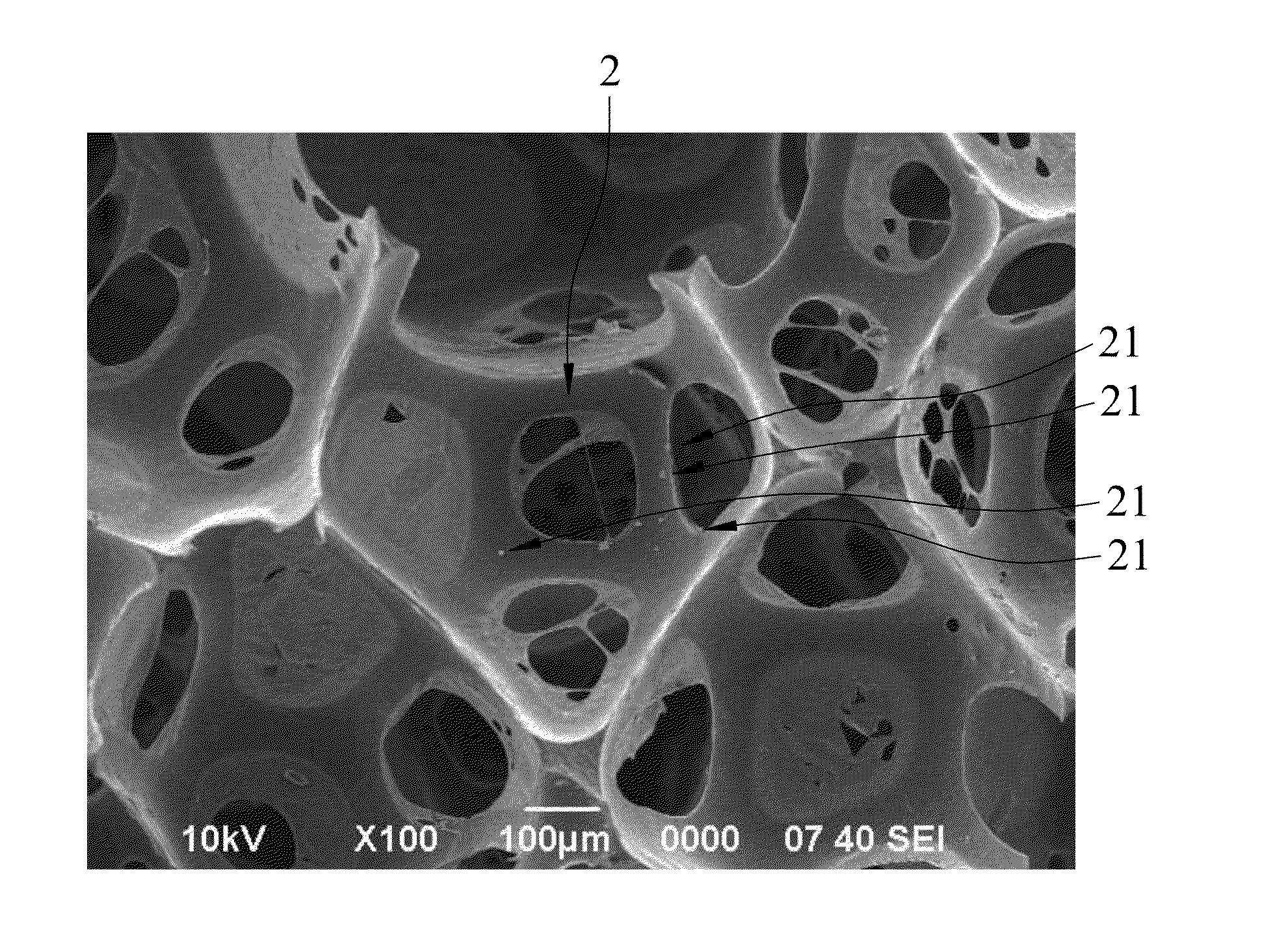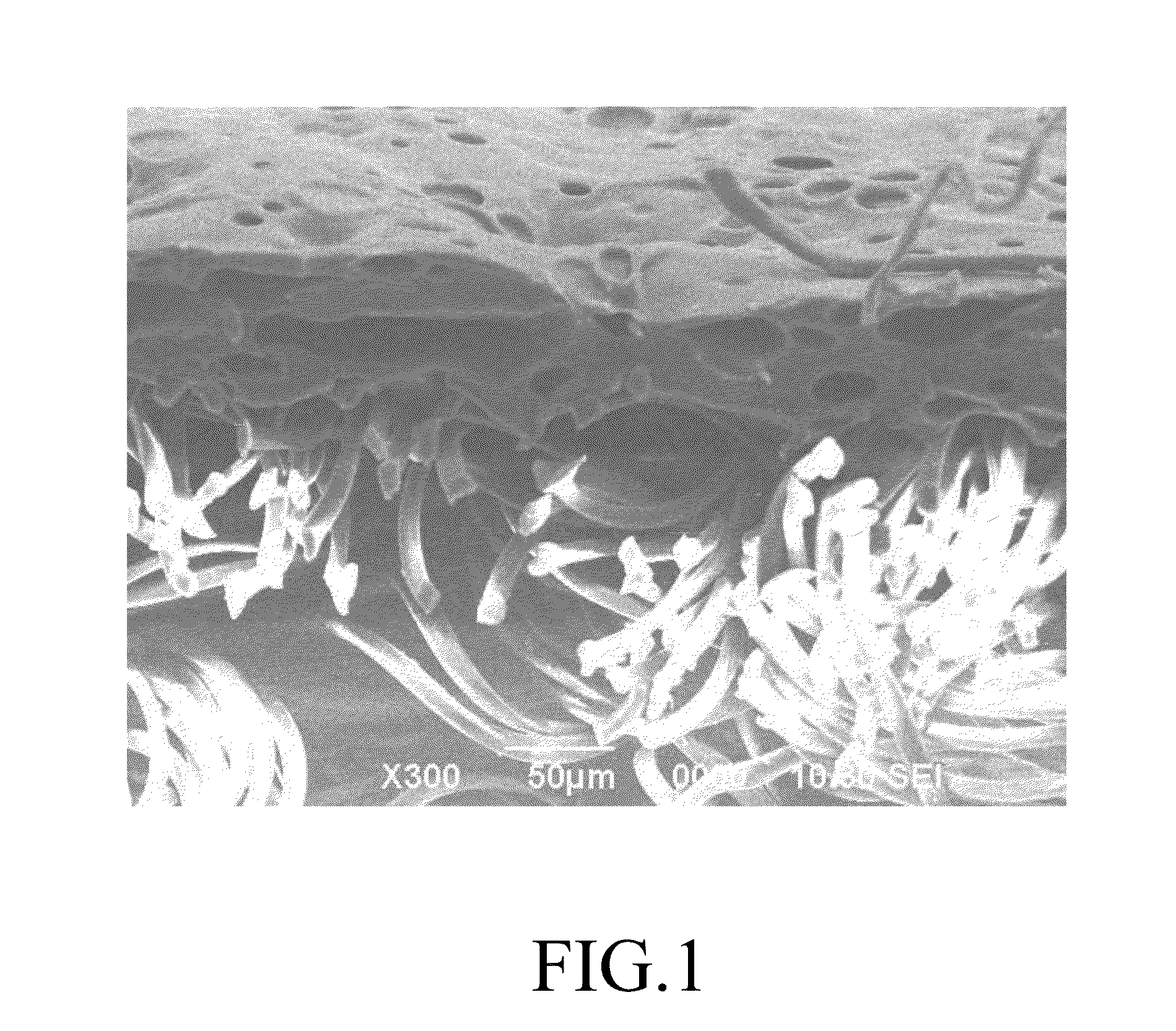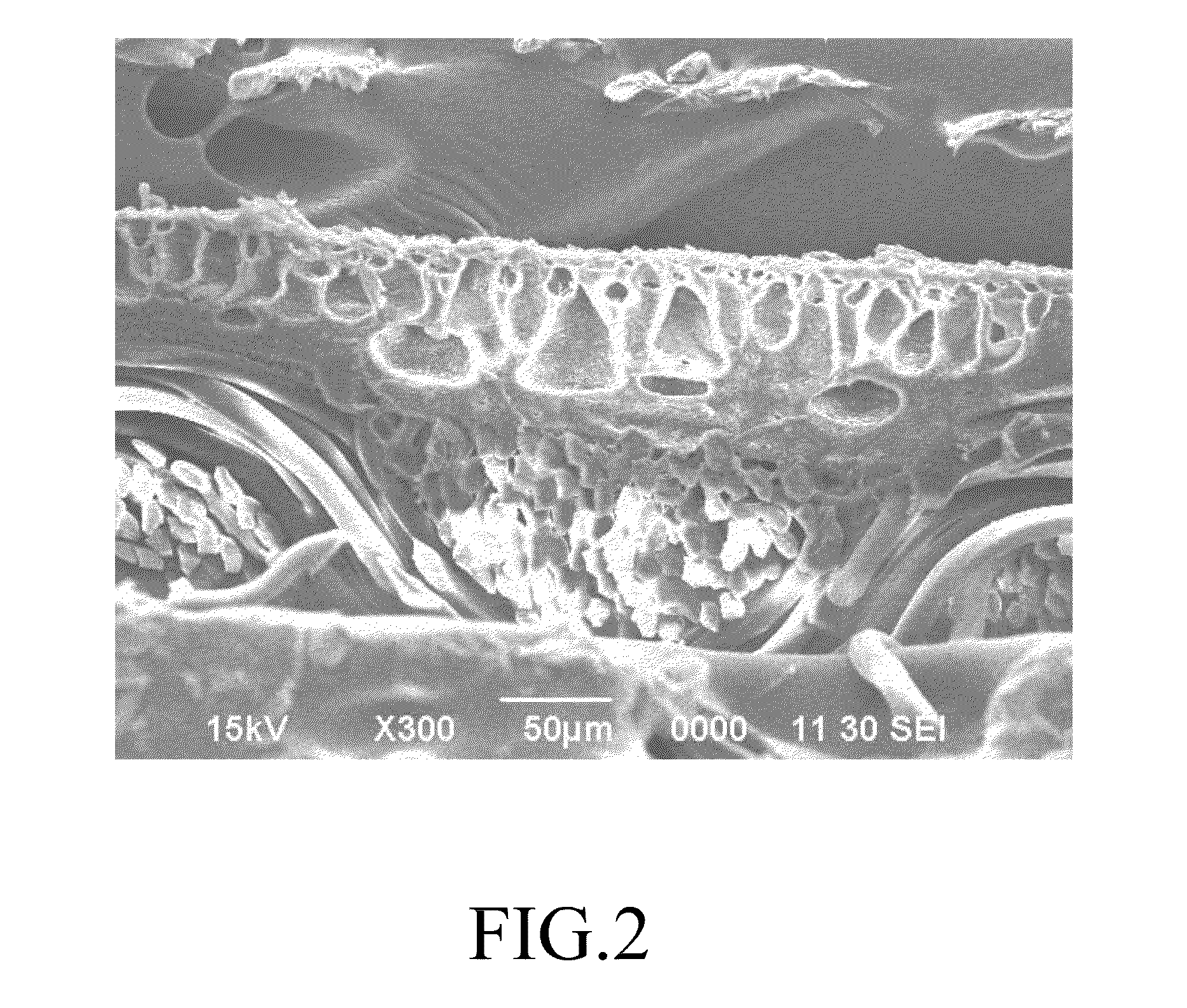Method for preparing a coffee polyol and compositions and materials containing the same
- Summary
- Abstract
- Description
- Claims
- Application Information
AI Technical Summary
Benefits of technology
Problems solved by technology
Method used
Image
Examples
example 1 (
EX1)
Preparation of Coffee Polyol
[0059]28 kg of coffee grounds were dried at 80° C. under stirring for 2 hours to obtain 14 kg of dry coffee grounds. The dry coffee grounds were divided into two equal parts (i.e., 7 kg per part). Each part was evenly placed into a 20 L extraction tank along with 2 kg of glass beads (particle size: 5 mm), followed by extracting coffee oil therefrom using supercritical carbon dioxide. The flow rate of carbon dioxide was 463 g / min, and the pressure and temperature in the extraction tank were 5075 psig and 65° C., respectively. The extraction lasted for 400 minutes to obtain 1.68 kg of coffee oil. The process was repeated so as to collect a desired amount of the coffee oil.
[0060]20 kg of the coffee oil thus collected, 1.4 kg of glacial acetic acid, 2 kg of pure water, 500 g of acetic acid and a catalyst including 120 g of sulfuric acid were mixed evenly in a 100 kg reaction tank. After heating the mixture to 70° C., 12 kg of hydrogen peroxide (having a c...
example 2 (
EX2)
Preparation of Water-Based Polyurethane Dispersive Solution
[0061]34 g of dehydrated coffee polyol, 145 g of poly (tetramethylene ether) glycol (PTMG, Mw: 2000), 45 g of poly propylene glycol (PPG) and 18 g of dimethylol propionic acid were mixed in a flask. 90 g of isophorone diisocyanate (IPDI) was subsequently and slowly added into the mixture to initiate prepolymerization so as to produce a isocynate terminated prepolymer. The reaction was monitored by measuring the NCO content of the isocynate terminated prepolymer under 85° C. using a titration method of ASTM-D1368. When the NCO content of the isocynate terminated prepolymer was less than 90% of the theoretical value, the reaction temperature was cooled down to 60° C., and 13.5 g of triethylamine (TEA) was added into the reaction mixture to neutralize the reaction mixture. After 10 minutes, the neutralization was completed, and the reaction mixture was cooled down to room temperature. 77 g of the coffee polyol was added to ...
example 3 (
EX3)
Preparation of Organic Solvent-Based Polyurethane Dispersive Solution
[0062]34 g of dehydrated coffee polyol, 195 g of PTMG, and 1000 g of a solvent containing dimethyl fumarate (DMF), toluene and methyl ethyl ketone (MEK) were mixed in a flask (40 wt % of DMF, 40 wt % of tolulene, and 20 wt % of MEK). 90 g of IPDI was slowly added to the mixture to initiate prepolymerization so as to produce isocynate terminated prepolymer. The reaction was monitored by measuring the NCO content of the isocynate terminated prepolymer under 85° C. using a titration method of ASTM-D1368. When the NCO content of the isocynate terminated prepolymer was less than 90% of the theoretical value, 77 g of coffee polyol was slowly added to the reaction mixture for emulsification, and 10.17 g of amino ethyl ethanol amine (AEEA) in 20 g of dimethylacetamide (DMAC) was slowly added to the reaction mixture after the emulsification so as to obtain the organic solvent-based polyurethane dispersive solution.
PUM
| Property | Measurement | Unit |
|---|---|---|
| Fraction | aaaaa | aaaaa |
| Fraction | aaaaa | aaaaa |
| Percent by mass | aaaaa | aaaaa |
Abstract
Description
Claims
Application Information
 Login to View More
Login to View More - R&D
- Intellectual Property
- Life Sciences
- Materials
- Tech Scout
- Unparalleled Data Quality
- Higher Quality Content
- 60% Fewer Hallucinations
Browse by: Latest US Patents, China's latest patents, Technical Efficacy Thesaurus, Application Domain, Technology Topic, Popular Technical Reports.
© 2025 PatSnap. All rights reserved.Legal|Privacy policy|Modern Slavery Act Transparency Statement|Sitemap|About US| Contact US: help@patsnap.com



